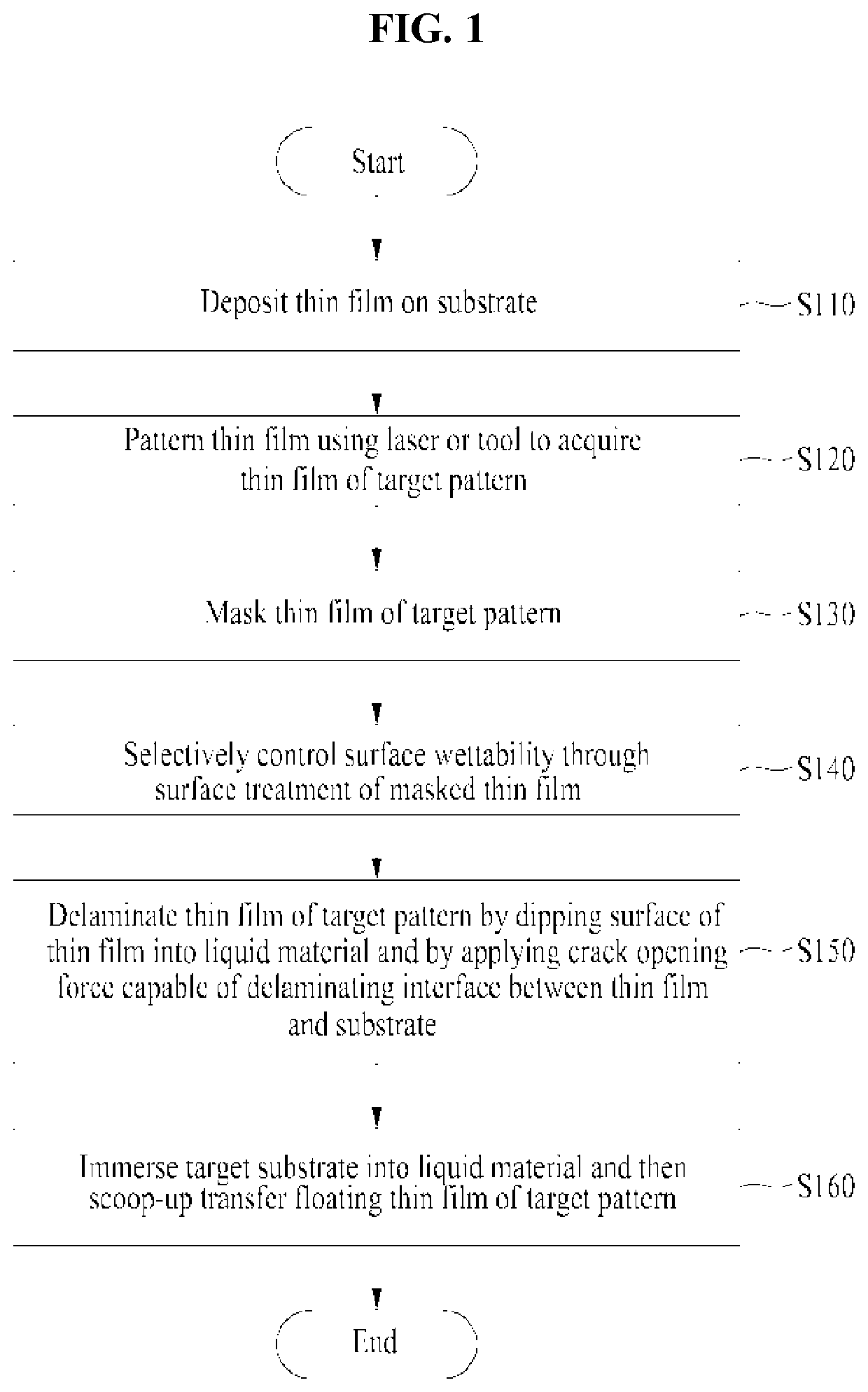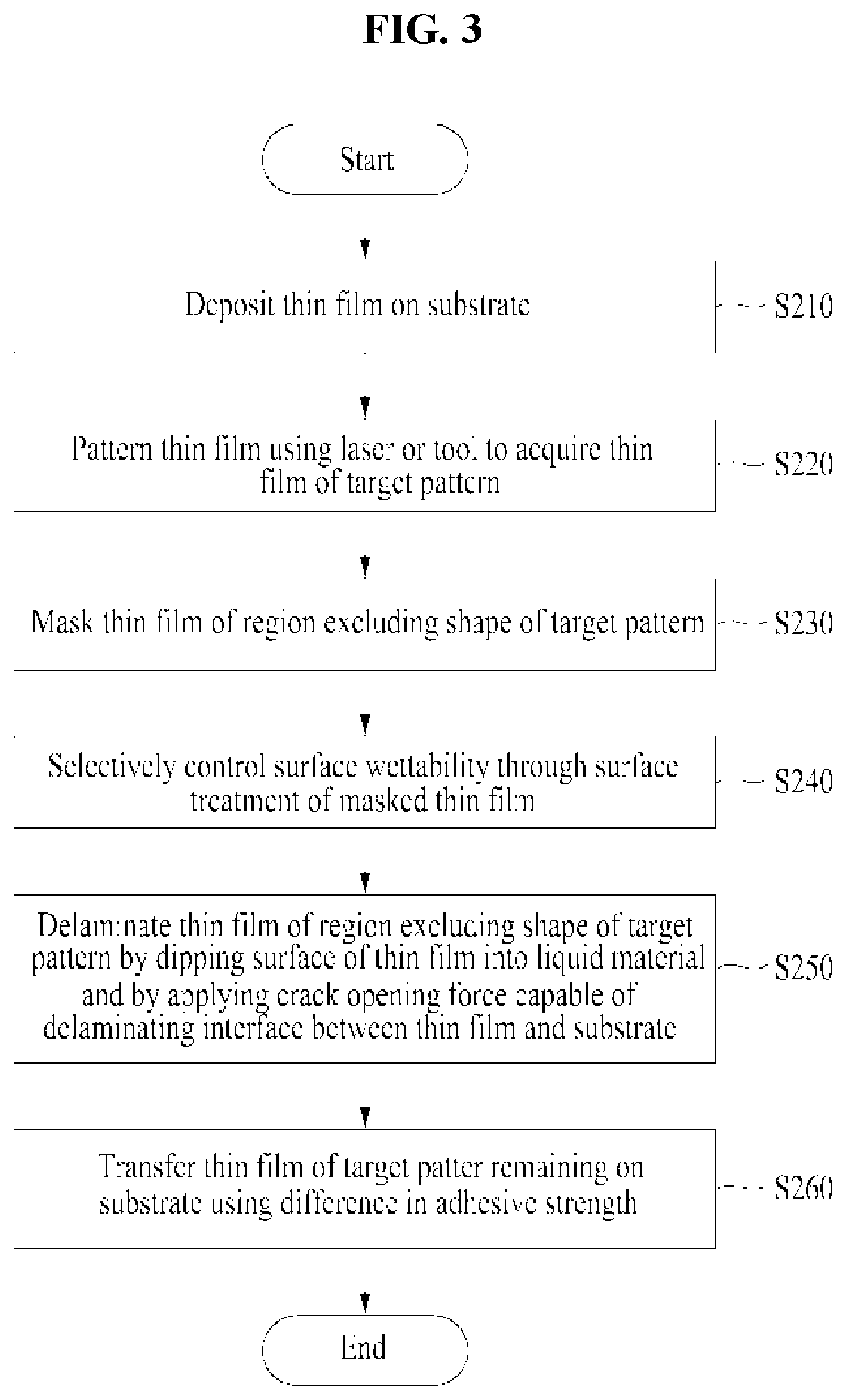Method for Selective Delamination and Transfer of Thin Film Using Liquid Platform
a technology of liquid platform and thin film, applied in the field of selective delamination and transfer, can solve the problems of low thermal stability of materials, limited pattern resolution to 100 nanometers (nm), and difficult application of vapor deposition methods, so as to avoid chemical damage and environmental contamination problems, and facilitate the transfer of thin films.
- Summary
- Abstract
- Description
- Claims
- Application Information
AI Technical Summary
Benefits of technology
Problems solved by technology
Method used
Image
Examples
Embodiment Construction
[0042]One or more example embodiments will be described in detail with reference to the accompanying drawings. Example embodiments, however, may be embodied in various different forms, and should not be construed as being limited to only the illustrated embodiments. Rather, the illustrated embodiments are provided as examples so that this disclosure will be thorough and complete, and will fully convey the concepts of this disclosure to those skilled in the art. Accordingly, known processes, elements, and techniques, may not be described with respect to some example embodiments.
[0043]When a component is described to be on another component, the component may be directly formed on the other component or a third component may be provided between the components. Also, in the drawings, thicknesses of components may be exaggerated to effectively describe technical content. Unless otherwise noted, like reference numerals refer to like components throughout the attached drawings and written...
PUM
| Property | Measurement | Unit |
|---|---|---|
| thickness | aaaaa | aaaaa |
| surface wettability | aaaaa | aaaaa |
| wettability | aaaaa | aaaaa |
Abstract
Description
Claims
Application Information
 Login to View More
Login to View More - R&D
- Intellectual Property
- Life Sciences
- Materials
- Tech Scout
- Unparalleled Data Quality
- Higher Quality Content
- 60% Fewer Hallucinations
Browse by: Latest US Patents, China's latest patents, Technical Efficacy Thesaurus, Application Domain, Technology Topic, Popular Technical Reports.
© 2025 PatSnap. All rights reserved.Legal|Privacy policy|Modern Slavery Act Transparency Statement|Sitemap|About US| Contact US: help@patsnap.com



